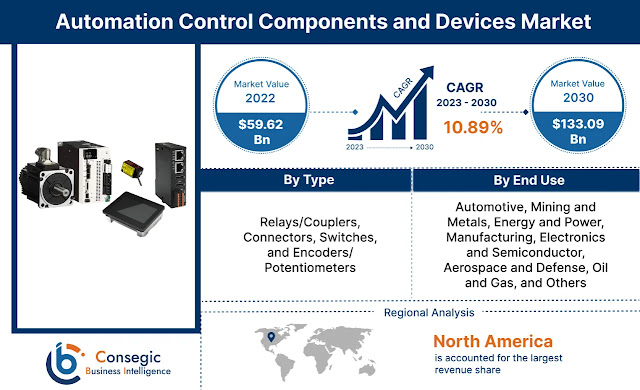Powering Smarter Living: The Rise of the Home Energy Management System Market
As the global focus intensifies on energy efficiency, carbon reduction, and smart living, the Home Energy Management System (HEMS) Market is entering a period of unprecedented growth. These systems empower homeowners to monitor, control, and optimize energy usage in real-time—transforming passive homes into intelligent energy hubs.
HEMS integrates hardware and software to manage heating, cooling, lighting, and appliance energy usage. Its influence spans residential construction, energy utilities, smart home automation, and IoT ecosystems. From reducing utility costs to enabling demand-side response, HEMS sits at the intersection of technology, sustainability, and daily life.
2. Market Size and Growth Potential
The global Home Energy Management System Market is projected to grow from USD 5.85 billion in 2024 to over USD 6.54 billion in 2025, with long-term growth expected to reach USD 16.21 billion by 2032. This reflects a robust CAGR of 15.3% from 2025 to 2032.
Such a trajectory indicates more than consumer adoption—it signals institutional investment, public policy alignment, and accelerated innovation. The surging market demand underscores how homes are evolving into data-driven environments, where energy use is no longer static but optimized dynamically via AI, analytics, and automation.
3. Key Market Segments
By Component:
-
Hardware
-
Control Devices
-
Communication/Display Devices
-
Others
-
Software
-
Services
By System:
-
Lighting Controls
-
Thermostats
-
Self-Monitoring Systems
-
Advanced Central Controllers
-
Intelligent HVAC Controllers
By Technology:
-
Wireless
-
Wi-Fi
-
ZigBee
-
Z-Wave
-
Bluetooth
-
Others
-
Wired
-
Hybrid
By Application:
-
New Construction
-
Retrofit
By Deployment:
-
On-premises
-
Cloud
This layered segmentation provides a comprehensive view of the ecosystem—from embedded control devices to cloud-based analytics platforms. It enables stakeholders to assess which segments are best aligned with emerging consumer needs, regional regulations, and technological integrations.
4. Key Players in the Market
Schneider Electric (France)
Honeywell International Inc. (USA)
Eaton (Ireland)
GE Appliances (USA)
Alarm.Com (USA)
Comcast (USA)
Ecobee, Inc. (Canada)
Ecofactor (USA)
General Electric Company (USA)
Johnson Controls (USA)
5. Market Trends and Drivers
Several dynamic trends are shaping the HEMS landscape:
-
Decentralized Energy Control: As households integrate solar panels and energy storage, HEMS serves as the command center for energy self-sufficiency and grid interaction.
-
AI-Powered Automation: Systems are increasingly self-learning, adjusting energy use based on lifestyle patterns, weather forecasts, and tariff rates.
-
Smart Grid Integration: Governments and utilities are adopting demand response frameworks, incentivizing HEMS to manage peak loads and contribute to grid stability.
-
Regulatory Support: Climate legislation and energy codes in Europe, North America, and parts of Asia-Pacific are compelling builders to include HEMS as a baseline feature in new housing projects.
-
Consumer Awareness: Growing eco-consciousness, combined with real-time energy feedback, is turning homeowners into proactive participants in energy conservation.
6. Regional Insights
-
North America: A mature market driven by smart home adoption, energy regulations, and strong vendor presence. U.S. states are increasingly mandating smart thermostats and energy audits in residential properties.
-
Asia Pacific: The fastest-growing region, propelled by urban expansion, middle-class growth, and tech infrastructure development. Countries like China, Japan, and South Korea are investing heavily in smart city initiatives.
-
Europe: Anchored by stringent environmental regulations and energy performance directives. Retrofits and government incentives are boosting deployment across both Western and Eastern Europe.
-
Middle East & Africa: A rising interest in green buildings and energy-efficient housing, particularly in Gulf countries, is pushing HEMS into high-end real estate development.
-
Latin America: Gaining traction via utility-led energy efficiency programs and growing partnerships with telecoms and smart device providers.
7. Forecast and Outlook
Looking toward 2032 and beyond, the Home Energy Management System Market is expected to become integral to climate-resilient housing and smart city infrastructure. As digital twins, blockchain-enabled billing, and AI-integrated energy models mature, HEMS will shift from optional enhancement to standard residential infrastructure.
The next frontier lies in interoperability—systems that work seamlessly across devices, platforms, and regions, enabling universal control and analytics.
8. Conclusion
The Home Energy Management System Market is not just growing—it is redefining how we consume, control, and conceptualize energy in residential spaces. With strong tailwinds from policy, innovation, and sustainability goals, it represents one of the most promising intersections of technology and daily life.
For investors, developers, and technology providers, the time is now to align with this movement—because the smart homes of tomorrow are already being built today.




Comments
Post a Comment